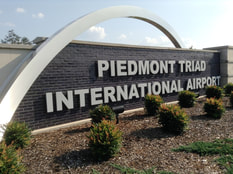 Image © by Brian E. Faulkner
Image © by Brian E. Faulkner But say you ran a smaller, regional airport located between two hub-sized airports, both roughly equidistant from larger population centers with considerably more flight options? Many fewer passengers use your airport vs. the others. How would you convince local people to fly from your airport rather two bigger ones, each an hour or so away?
One thing you might do is solicit traveler feedback. Short of conducting passenger intercepts (a good idea), check out Yelp(dot)com and build your key message around the good things people are saying there. For Piedmont Triad International Airport, which serves twelve North Carolina counties and six Virginia counties surrounding Greensboro, Winston-Salem and High Point (the world’s furniture capital), the online chatter mostly is good news.
Passengers seem to appreciate the ease with which they fly in and out of PTIA, despite the occasional complaint about not having a Starbucks to hang out in.
“In and out quickly. You can close the door to your car and be at your gate in under 12 minutes.”
local passenger
“An awesome airport … one of my favorites.”
Hollywood, CA passenger
“I have been so overwhelmed by my experience at Greensboro airport that I feel like I needed to write about it,” posts a traveler from New Jersey. “Every single employee of the airport or any of the vendors is ecstatic that you chose to fly out of ‘their’ airport. They are constantly thanking you and going out of their way to help you. It is the same every time - car rental, ticket agents, TSA, gate agents, security, vendors - they all have that same attitude. Fly out of this airport if you have the chance!!”
There seem to be two kinds of people who love to “Fly PTI.” One is the local passenger willing to pay a small premium for their ticket to avoid driving either to Charlotte or Raleigh-Durham -- if you drive to Charlotte from the Triad and dare count on I-85 or I-77 during certain morning or afternoon hours you could easily miss your flight. The second kind of PTIA passenger (mark me among them) revels in the experience of a less-than-bustling terminal, short wait times and efficient service. For people like us, an investment in avoiding the inevitability of parking hassles, long lines and general uncertainty is an easy choice. Some PTIA passengers do quibble about the lack of restaurant options, but they love the convenient rental car location just steps outside baggage claim. Some also snicker at the “International” in PTIA but love easy connection to the big hubs – while appreciating the ease of getting in and out of this airport.
Management, of course, would like to see an increase in hustle and bustle because that means more paying customers. But here of late they also seem to be embracing – and crowing about – the many pluses of their situation while working diligently to offer “the best passenger experience we can.”
“It’s hard running an airport,” says Kevin Baker, PTIA’s executive director, “because everybody’s goal is to leave the building. So while they’re with us, our goal is to make them as comfortable as possible.
“We want it to be a hard decision for people to leave our airport” in favor of one of the others. “Parking is cheaper, and easier. Every seat in the ticketing area and in both concourses has power available to passengers – plus the ability to charge your iPad or other device. And there’s free WiFi.”
The 4.5 million people living within 90 minutes of PTIA will be glad to learn that the difference in fares between GSO, CLT and RDU has been reduced, according to the airport’s marketing and customer relations manager, Stephanie Freeman.
“Lower fares used to be the key driver of leakage to the other airports,” Freeman says, “and the perception still lingers. We have found that people will choose to fly from here for as much as $150 difference compared to Charlotte and $100-$150 compared to Raleigh-Durham, and that difference is increasing.”
Baker acknowledges that while PTIA’s fares are “coming more in line,” there will always be some passenger leakage, particularly in light of Charlotte’s position as a hub with 140 destinations vs. PTIA’s 16. (PTIA was 91st in passenger enplanements among U.S. airports during CY2013, according to the FAA. Charlotte was #8 and Raleigh-Durham #39.) “We can’t change that,” he says, “but we can make the first step in connecting to more than 200 worldwide destinations easier.” Currently, there are 53 direct flights out of PTIA to 14 destinations served by American/U.S. Airways, Delta, United, Frontier and Allegiant.
PTIA has added a variety of passenger-pleasing amenities over the past four years. In addition to the personal connectivity features mentioned above, they’ve refreshed the terminal and concourses, updated flight information displays and, most recently, have added charging stations for electric vehicles – the first airport to do so in North Carolina. Fifty Airport Ambassadors also add a personal touch to airport service, a team of 50 volunteers who “do our best to transform your traveling stress into southern-style comfort.”
Baker points out that in addition to its many passenger delights, Piedmont Triad International Airport is transforming its 4,000 acre campus into an “aerotropolis,” with hopes of becoming the Wichita of the East. Called “The best landing field in the south" during its early days, PTIA now is the third busiest airport in North Carolina -- and the state’s largest aerospace employer. Tenants include:
- Honda Aircraft Company, which employs 650 people (at last count) and plans to introduce their innovative Honda Jet – designed and manufactured at PTIA -- into service next year;
- maintenance, repair and overhaul giant TIMCO Aviation Services, which alone has 705,000 square feet of hanger space at GSO, 1,500 local employees and attracts business from all over the world, in part because the airport’s two parallel main runways can comfortably handle the world’s largest planes;
- and Cessna Aircraft, with a 45,000 square foot service center for its Citation business jets.
The FedEx mid-Atlantic air hub is here, in the company of firms like GE Aviation and B/E Aerospace. And according to Executive Director Baker, there’s plenty room for more. The (self-supporting) airport authority has approved a 10-year, $350 million development program to acquire and prepare some 600 acres of land nearby. Down-the-road benefits? Some 18-thousand potential new jobs and perhaps $3.2 billion of business impact.
A wealth of aviation-based training already is in place to help assure the region’s economic success. Guilford Community College’s aviation training center and other nearby schools offer aviation- and aerospace-related programs. The new T.H. Davis Aviation Center, which partners with Embry-Riddle Aeronautical University, is considered one of the best-equipped aviation maintenance training facilities in the Southeast.
However, daily evidence of this airport’s success is reflected in the experiences of its passengers, people who choose to fly in and out of PTIA despite the looming reality of two hub-sized airports only an hour-and-a-half away.
Could Piedmont Triad International Airport be America's Most Satisfying Small Airport?
You’d think so to read what a strong plurality of PTIA travelers have to say – and as anyone who flies commercial these days well knows, airline passengers will complain at the drop of a boarding pass should something go awry but are less likely to pay a compliment.
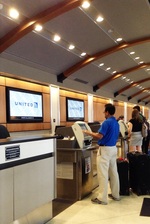 Image © by Brian E. Faulkner
Image © by Brian E. Faulkner “Piedmont Triad International Airport is an awesome little airport!” writes another passenger. “And while it does not have the breadth of dining and shopping options of other airports, it has its own small airport charm!”
“It’s ‘Home Sweet Home’,” says a third, “compared to huge, chaotic airports.”
All is not perfection at PTIA – some passengers do have minor gripes. But for a smaller airport caught between two much larger ones, the good news is very good indeed.
The tagline says it all. Fly easy. Fly PTI.
TakeAway: Communicate your competitive advantage based on what your most satisfied customers have to say about your product or service. Because that’s the truth!
Content © by Brian E. Faulkner
Tags: PTIA, Piedmont Triad International Airport, Greensboro, Winston-Salem, High Point, Starbucks, GSO, CLT, RDU, American / U.S. Airways, Delta, United, Frontier, Allegiant, aerotropolis, Honda Jet, TIMCO, Cessna Aircraft, GE Aviation, FedEx, B/E Aerospace, Guilford Community College, Embry-Riddle Aeronautical University, Yelp.com
About Brian Faulkner:
> blogs to establish you as the thought leader / authority in your business category
> case stories that communicate your sales successes and invite prospect inquiry
> testimonials that showcase customer / client satisfaction in 1-2 short sentences
> positioning statements to guide business development & marketing
> landing page copy to set your business or brand apart in a compelling way
> tagline development to attract the interest of your most qualified prospects
Brian also is a five-time Emmy award-winning Public Television writer / narrator. He is principal writer and narrator of UNC-TV’s popular "Our State" magazine series, on the air since 2003. His distinctive sound has been heard on many hundreds of radio spots and client videos since the 1970s. People say he has a “Mercedes voice” and sounds a bit like Charles Kuralt, which Brian considers a welcome ... but happy ... illusion.

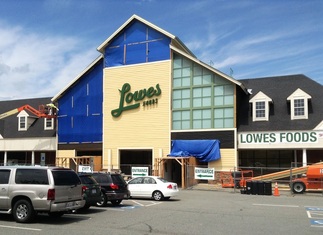
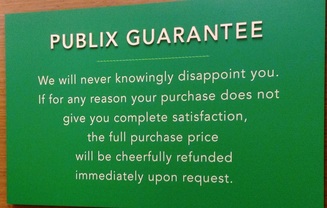
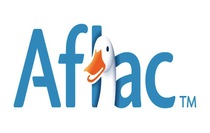

 RSS Feed
RSS Feed